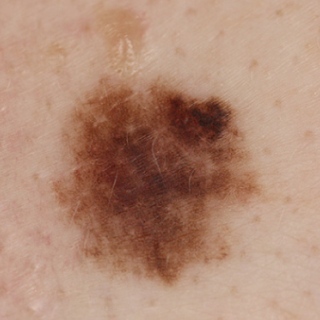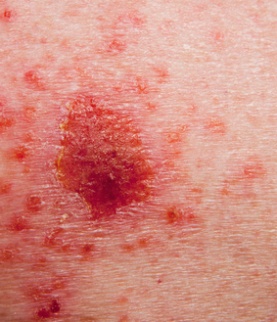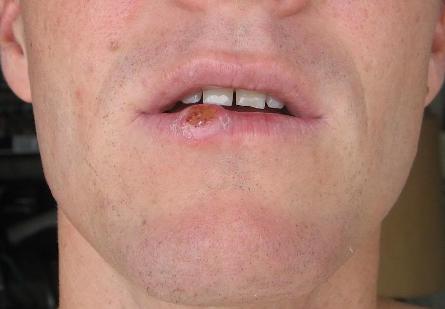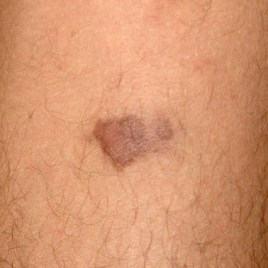We’d like to show you some early skin cancer pictures so that you’ll be better able to recognize the warning signs when you see them. Recognizing skin cancer early is critical because it is a very treatable condition when caught early, but once it spreads the risk of fatality increases significantly. You can read more about identifying skin cancer here. Remember, though, that a biopsy is the only way to diagnose skin cancer for certain, so see your doctor if you have any concerns. It’s just not possible to determine for certain whether something is cancerous just by looking at it (although an experienced dermatologist or oncologist may have a pretty good idea of what the result of a biopsy will be after examining a questionable lesion or mole). These pictures are not intended to help you diagnose yourself, but rather to help you know when you should consult a physician.
Early Skin Cancer Pictures
There are quite a few different types of skin cancer. We’ll show you some pictures of the most common types but even they can vary in appearance, depending in part on things like the size of the cancerous lesion, where on the body cancer develops, your skin tone, and how advanced the cancer is. To learn more about the three most common types of skin cancer, follow the link.
Melanoma Images
Melanoma is one of the most common types of skin cancer. It can occur on any part of the body. Sometimes it even occurs under the fingernails or toenails. Most often, though, men get melanoma on their face, chest, or back, while women get it on their lower legs. In these melanoma images, you can see how it looks on some different parts of the body.
Melanoma sometimes develops in a mole, although it can also develop on normal skin. Most moles are not cancerous and most people have a number of moles on their bodies, so it’s important to understand the difference between normal moles and moles that might be cancerous. Here are some photos of normal moles and moles with skin cancer.
You can’t tell it from these skin cancer pictures, but it’s important to understand that cancerous moles frequently change in size, shape, or color. A normal-looking mole that has recently grown or changed in shape or color should be examined by a doctor.
When it does not develop in a mole, melanoma may look like a dark blotch on the skin. It might also look like a sore that does not heal.


Basal Cell Carcinoma Images
Basal cell carcinoma sometimes looks a little like a wart, a pearly-colored bump. Other times it resembles a scar. Basal cell carcinoma is most common on the face or neck, though it can sometimes be found in other areas of the body, as well.


Squamous Cell Carcinoma Images

Squamous cell carcinoma sometimes looks like a hard red bump, almost like a pimple. Other times it is a flat lesion with a crusty or scaly surface. It may resemble a sore that has scabbed over. Like basal cell carcinoma, squamous cell carcinoma is most commonly found on the face or neck, though it sometimes occurs in other parts of the body.
Kaposi Sarcoma Images
Kaposi sarcoma is a less common form of skin cancer. It usually occurs in people with immune system disorders, like AIDS, or those taking medications that suppress the immune system, such as drugs taken after organ transplants to prevent rejection of the new organ. It causes red or purple blotches on the skin.

If You Are Concerned
If, after viewing these early skin cancer pictures, you are concerned about something on your skin, we encourage you to see your doctor or make an appointment with a dermatologist as soon as you can. It’s important to diagnose skin cancer early because treatment is much more likely to be successful when initiated early. As the American Cancer Society points out, a prompt diagnosis can mean the difference between life and death.
Remember, though, not every mole or blemish on your skin is skin cancer. While it is important to see a doctor if you have any concerns, it is also important not to panic. Most moles and other unusual marks on the skin turn out to be benign, or noncancerous. Even if you have something on your skin like what you see in one of these early skin cancer pictures, there is a good chance it is not skin cancer but something much less serious.
American Cancer Society: Skin Cancer
